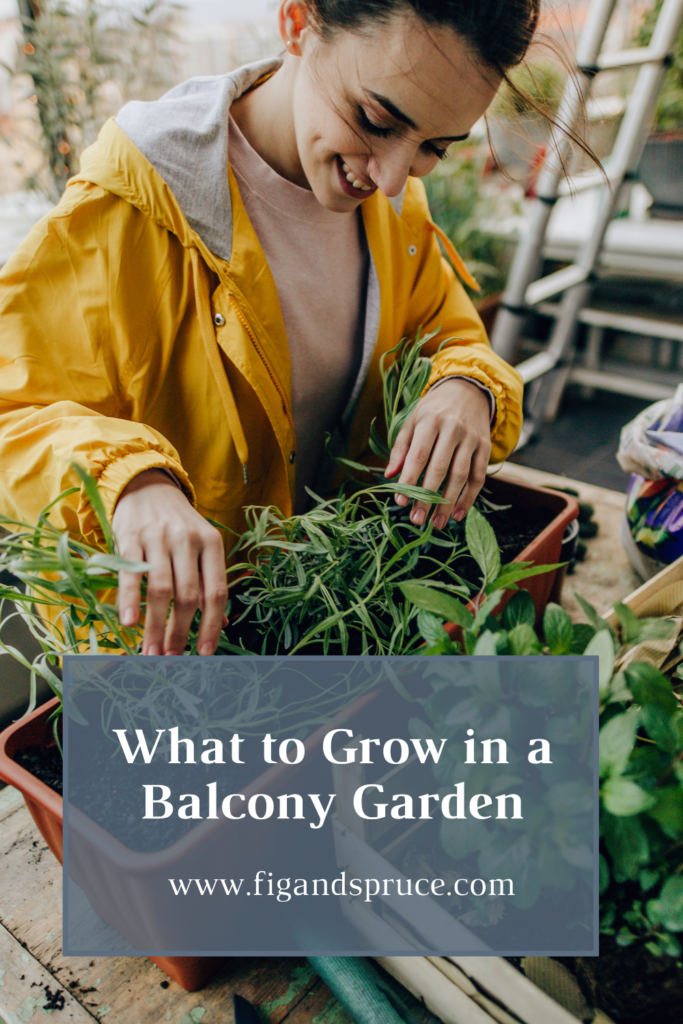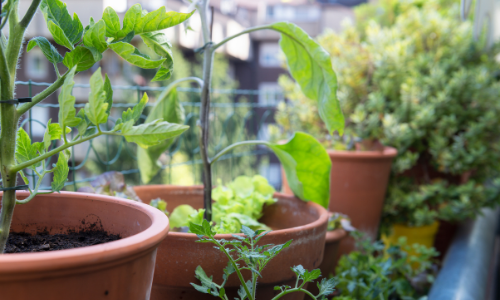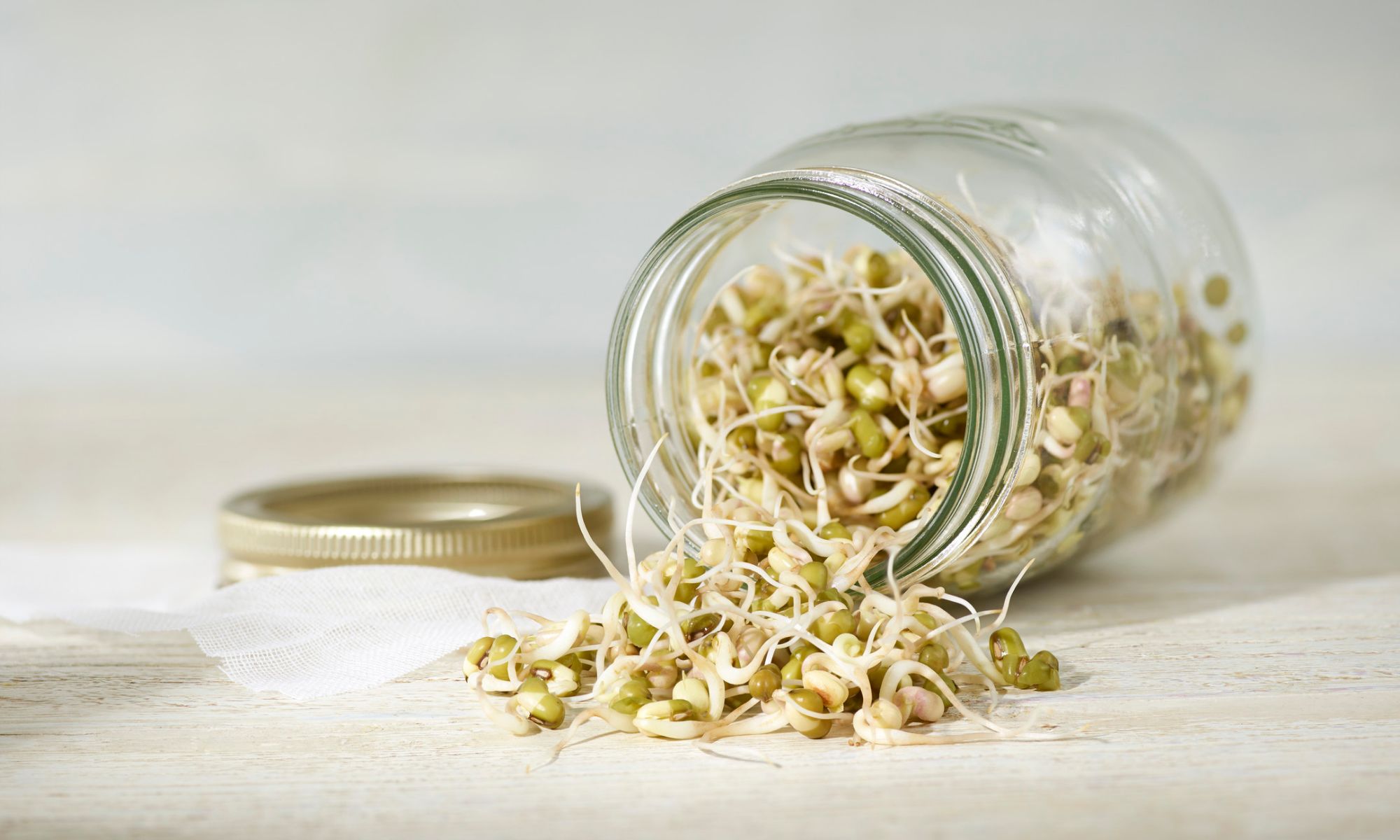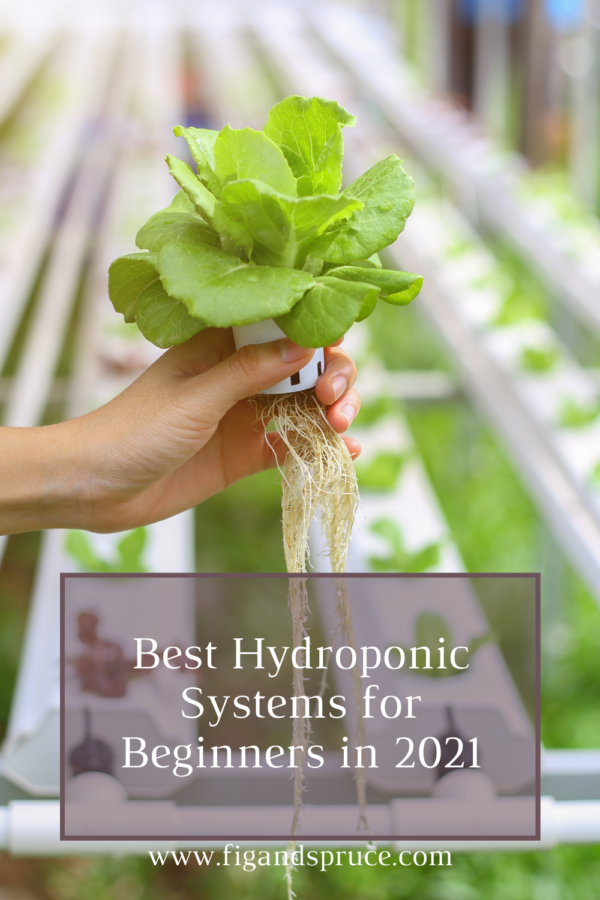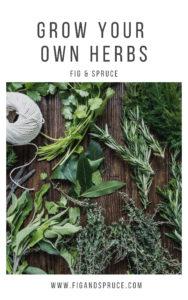What to grow on balcony gardens is a common question for beginner gardeners. Whether its selecting the plants you want to grow or determining how to get the best set up, it can be intimidating for beginners.
Today, we’re going got cover what to grow on balcony gardens, as well as the different factors to consider when setting up a container garden for the first time.
Table of Contents
Factors to consider
First, lets go over some factors to consider when deciding what to grow on balcony gardens.
Amount of Space Available
One of the primary considerations is the space that you have available. This will directly impact how many plants you can grow.
If you’re in an apartment and your balcony is very small, you’ll need to pick your plants accordingly.
On the other hand, if you have a large outdoor space then you can plant a number of things without running out of space.
If you are working in a tiny space, you might consider adding a plant stand.
We love this option from Amazon for tiny balconies, but there are many different options available for your consideration.

For a full comparison on plant stands, check out this article.
Amount of Sunlight
Another major factor of having a balcony garden is how much sunlight does your space get. Also you’ll want to evaluate whether it will be direct sunlight or indirect sunlight.
Some plants, like tomatoes, thrive best under full direct sunlight.
However, if you don’t have direct sunlight, it is still possible to grow tomatoes on your balcony.
To help balance a lack of direct light, you can consider adding a grow light to your container garden to help supplement the indirect light available to your plants.
There’s a lot of grow light options available out there, for small spaces our top pick is one like this one on Amazon.
This grow light model has automatic timer functions that make it easy to set and forget your grow light. It also has two adjustable light panels so they can cover multiple plants at a time.

Weather Conditions
One consideration that may be obvious (to some) is weather conditions.
Weather will dictate both what you can grow and the length of the grow cycle for each plant.
Tomatoes, for example, are hot weather loving plants and will not last long past the first chilly morning of fall.
Also, if you plant your tomatoes too early, they’ll likely get hit with a late spring frost that can be detrimental to the plant.
Will You Move Your Plants Indoors?
Aside from seasonal changes, you need to consider any weather events that might affect your plant.
For example if you live in Florida, you might be hit with heavy summer rain storms frequently.
These can be dangerous to plants that are on your balcony, so you’ll want to consider if you’re going to move your plants indoors as weather events come up.
This could be a temporary move, or if you want you could move your plants inside once the weather cools off. Herb gardens for example are very adaptable and can be moved inside at the end of the season with little shock to the plant.
Selecting Your Plants: What to Grow on Balcony Gardens
Now, lets discuss some of the best options for plants to start growing on a balcony.
Herbs
Herbs are one of the easiest to get started with. Basil, parsley, rosemary, dill, and more are all beginner friendly plants.
Herbs are fairly resilient and can grow even in indirect light. They can also handle early or late season weather fluctuations, and can be grown inside as well.
Herbs are also very satisfying plants to grow because they grow fast. This gives a quick gratification to new gardeners, which can be frustrating if you choose a plant that takes a long time to bear fruit (like a lemon or avocado tree that take years).
Herbs are also an easy way to enhance a lot of dishes that you can cook at home. Fresh basil, parsley, and dill all have a wide use of applications that will enhance the flavor of different foods.
These factors make herbs an ideal place to start when you’re a beginner gardener.
Tomatoes
Tomatoes can be another satisfying plant to grow in a container garden. Although they prefer direct light, you can grow container garden tomatoes in indirect light if that’s all you have. You may want to add a grow light to supplement their growth cycle though.
If you have less than ideal conditions, or are a beginner in container gardening, we recommend that you start with a smaller variety of tomatoes to begin with. Cherry tomatoes, grape tomatoes, or something similar are easier to grow in less sunlight or non ideal conditions.
Larger varieties of tomatoes can be grown, however it takes a little more work for the plant and you’re not likely to see as many tomatoes from your larger varieties without direct sunlight.
Plants
With flowers – the world is your oyster! Many varieties of flowers can be grown both indoors and out. We love peace lilies, and those can easily be grown both inside and out.
Other Tips
Lets talk about some other considerations when creating a balcony garden.
Consider Your Potting Soil
Potting soil is one of the most important factors for success in your balcony garden.
A high quality potting soil will have nutrients that your plants need, as well as the right balance of ingredients to provide both drainage and aeration for plants.
Choosing a soil that either has the wrong balance of nutrients, or is too dense for potted plants can lead to problems down the road.
There are many options for potting soil in container gardens, but our top pick is the Happy Frog Potting Mix, which is available on Amazon.

When Should You use a Grow Light?
To evaluate if you need a grow light, you’ll have to consider two factors.
First – how much light does your plant need? Some plants are fine or even prefer indirect light. Some, on the other hand, require full sun to thrive and grow.
The second factor of course is how much natural light you get for your balcony garden. If you have a spot that receives direct light for part of the day, and you’re trying to grow a tomato plant, it might be worth supplementing with a grow light to help give your plant as much light as possible.
With any plant though, its important to give your plant some rest each day. You should not keep grow lights on 100% of the time. While this might seem tempting, plants need to rest from their active growth in the light each day.
Every plant will vary a little bit, but a good rule of thumb for how long to leave grow lights on each day is up to 12 hours (or less depending on the plant and the natural light in the area).
Ensure Your Plants have Drainage if Needed
As we briefly discussed in the section covering potting soil, its important to ensure your plants have the right amount of drainage.
When plants are in a pot, they can often retain too much moisture around their roots which can lead to root rot.
There are several ways to ensure that you’re plant gets enough drainage. However, if you have a potting soil that is very dense and compact it can be hard to ever reach the right level. Choosing a potting soil is one of the key ways to help ensure your plant gets the right amount of drainage and set it up for success down the road.
